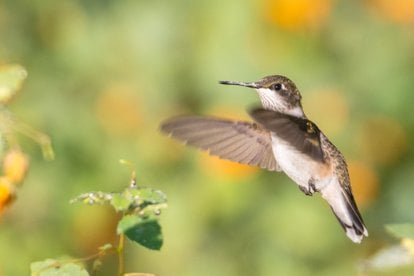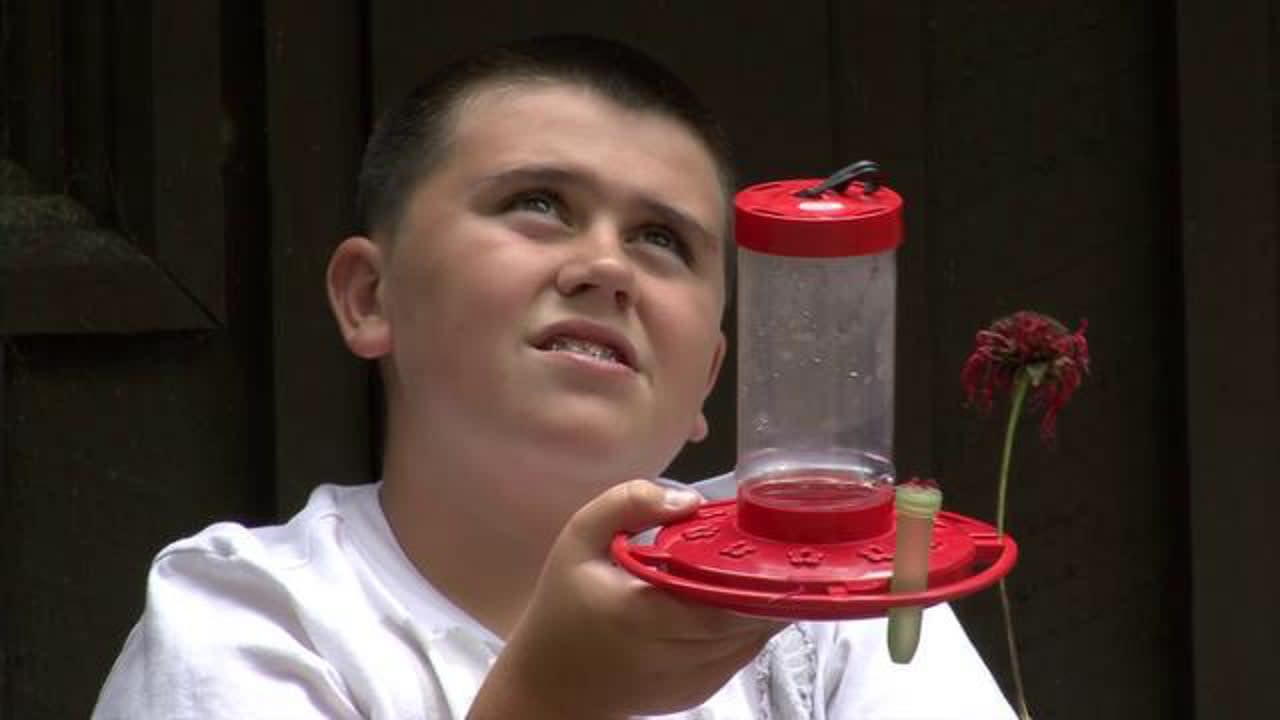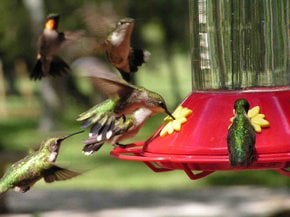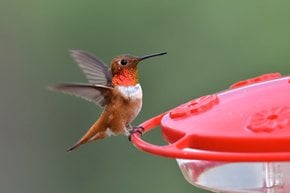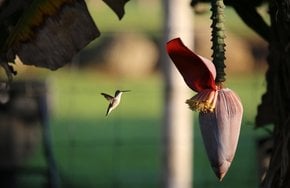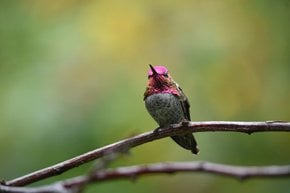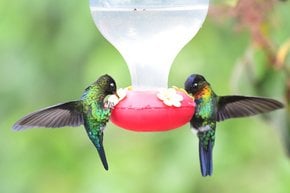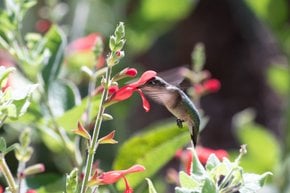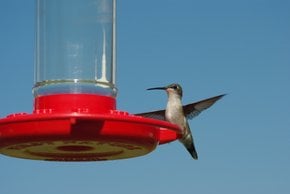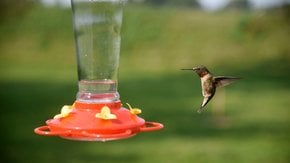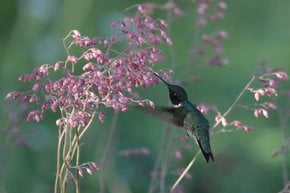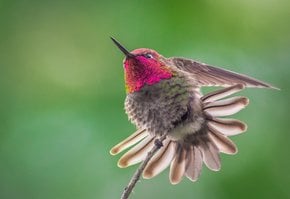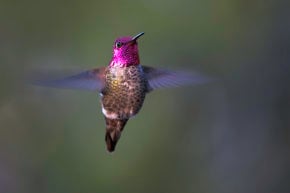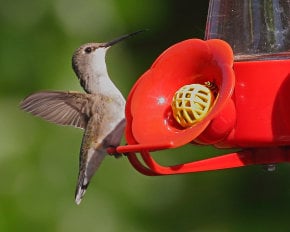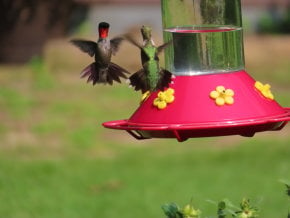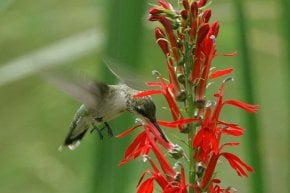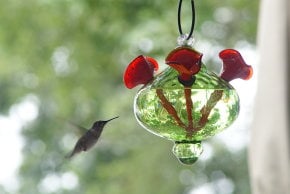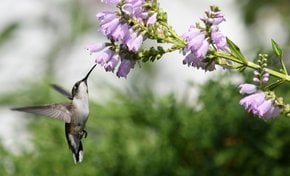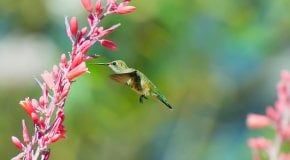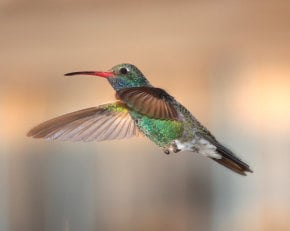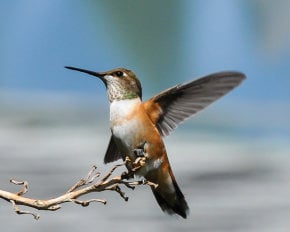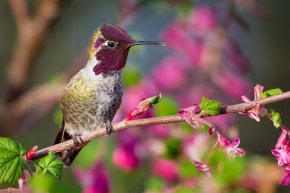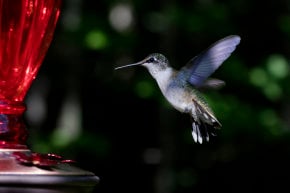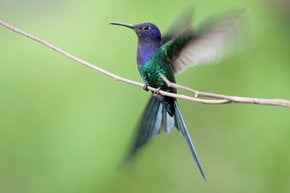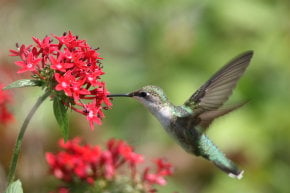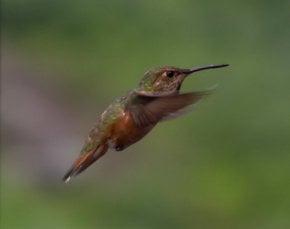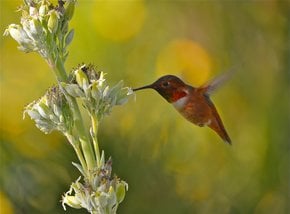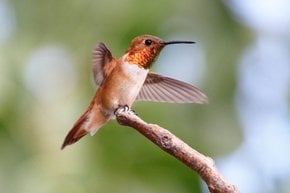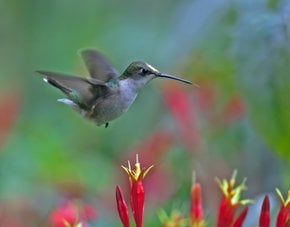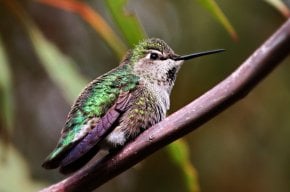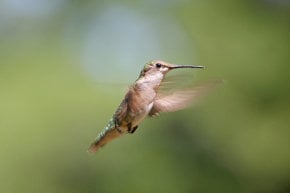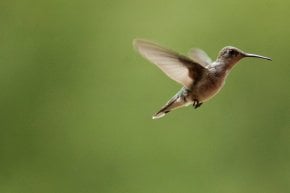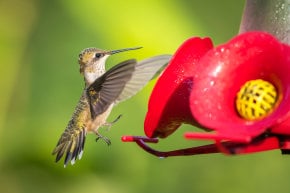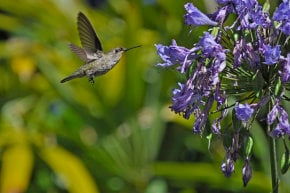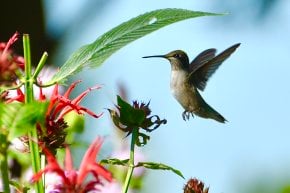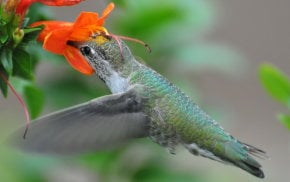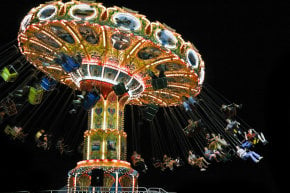Hummingbirds in Ohio 2026
View dozens of tiny, swift, and bold ruby-throats in the Buckeye State during their breeding season
Best time: May–September
Hummingbirds in Ohio are numerous between May and September. Most of them are ruby-throated hummers (Archilochus colubris), the only native Ohio hummingbird, which nests across eastern North America. Males are easily identified by their vivid glossy throats, whereas females have plainer plumage. When the breeding season is over, adults and juveniles migrate south to Central America.
When do hummingbirds leave Ohio for the winter
Southern migration may start in late August. The majority of ruby-throats leave in late September, and all are gone by mid-October. Males depart first; females and young hummers follow a week or two later. Unlike most other birds, hummingbirds tend to move separately. The world's smallest birds are capable of incredible long-distance migrations stretching for up to 1,500 mi (2,400 km) and including a non-stop flight above the Gulf of Mexico. Most winter in Mexico, Panama, or the Caribbean Islands. However, some are satisfied with the Gulf Coast of the United States.
When do hummingbirds come back to the state
Again, male ruby-throats are the first to arrive in Ohio in late April or early May and stake out feeding areas. Hummingbirds are notably territorial critters and would aggressively defend their feeding sites. Females catch up a few weeks later. After mating, mother hummers bring their chicks up alone in walnut-sized nests and might be rarer guests at the flower gardens and backyard feeders than males.
When to put out hummer feeders in Ohio
The right time to set up the feeders in the yard is late April when new tiny nectar drinking fliers struggle to find food in the wild. Curious and not bothered by humans' presence, ruby-throats often come close to your window and are fun to watch. The easy recipe for homemade nectar is one part sugar and four parts water. Don't add red dyes and clean the basin regularly to prevent mold.
When to stop feeding hummingbirds
You can take the feeders down in mid-October at the end of the ruby-throats season. Two weeks after your last sighting is considered the right time. However, some Buckeyes might maintain their feeders year-round. Contrary to popular belief, hummingbird migration is triggered by shorter daylight hours rather than food supplies. So you won't put ruby-throats in jeopardy by leaving the feeders for longer. The sightings recorded in late October and after will be rare migratory hummer species blown off-course.
Types of hummingbirds in Ohio
Besides the regular ruby-throated hummers, the rare visitors include westerly species of rufous (Selasphorus rufus) and calliope (Selasphorus calliope) hummingbirds who accidentally get into the Buckeye State during their migration. Occasionally, Ohioans might spot such vagrants as Mexican violetears (Colibri thalassinus), Anna's hummingbirds (Calypte anna), Allen's hummingbirds (Selasphorus sasin), and broad-tailed hummingbirds (Selasphorus platycercus). Read more about the peculiarities of each species here.
Best time to get a glimpse of a hummer
To sum up, May through September is the best time for viewing hummingbirds in Ohio. Still, late summer stands out as the population enlarged by juveniles swarms the feeders in a feeding frenzy. The birds put on 25–40% of their weight at this time to endure the forthcoming migration.
Best places to spot hummingbirds in Ohio
You could catch a glimpse of this zippy little guy anywhere across the state, including such big cities as Cincinnati, Columbus, or Cleveland in northeast Ohio. Your backyard feeder will bring superb chances for sightings.

